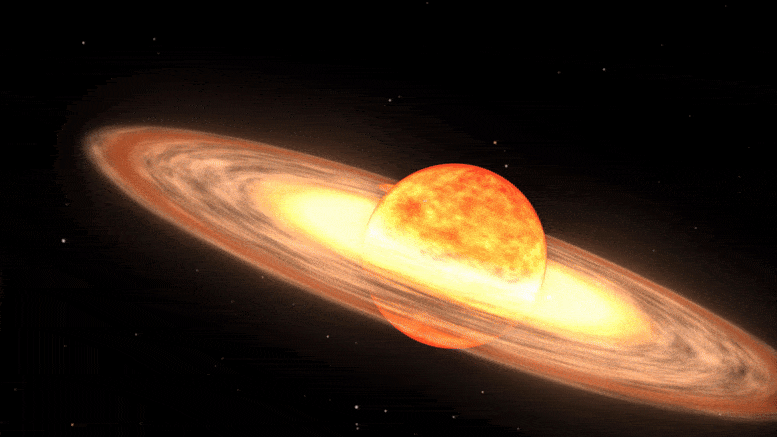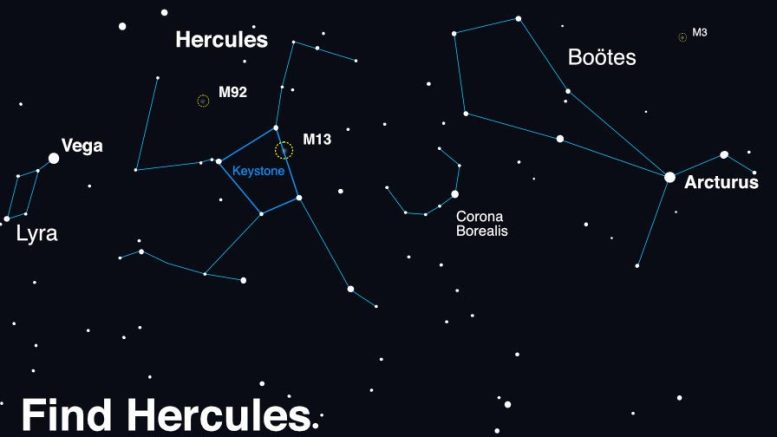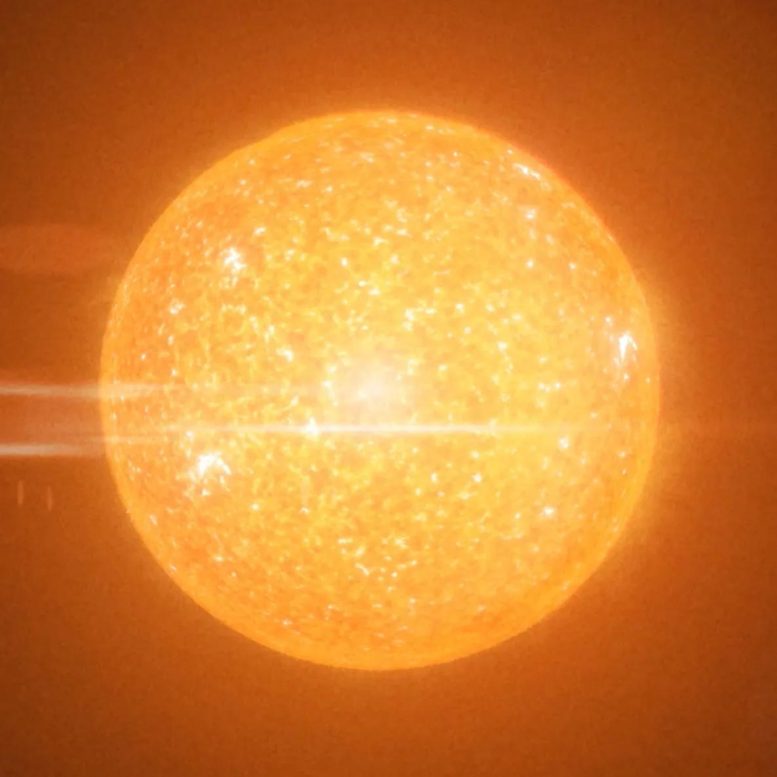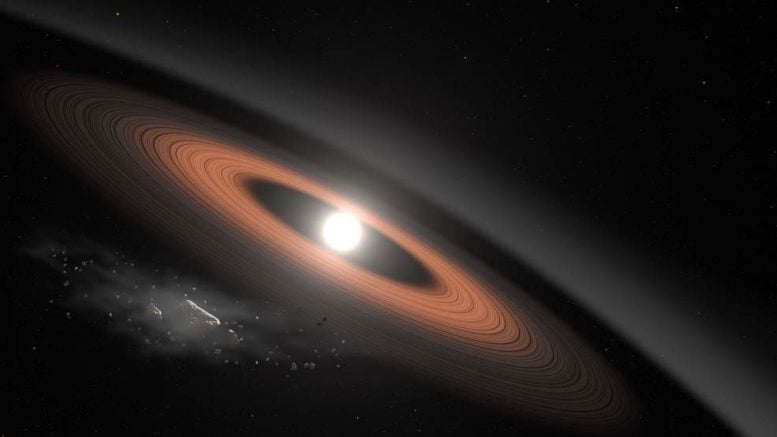A star system 3,000 light-years away, known as T Coronae Borealis, is expected to become visible to the naked eye between February and September 2024, due to a nova explosion. This rare event, which occurs approximately every 80 years, will cause the star to shine from +10 to +2, making it as luminous as the North Star. The phenomenon is the result of a thermonuclear reaction within a binary star system, which includes a white dwarf and a red giant, and represents a unique opportunity for skywatchers to witness a once-in-a-lifetime celestial event. Image source: NASA/Conceptual Image Laboratory/Goddard Space Flight Center
The upcoming supernova explosion of T Coronae Borealis, which can be seen without telescopes, promises a spectacular celestial show in 2024, as it shines to match the North Star in brightness, a phenomenon resulting from a cosmic dance between two planets. White dwarf And the red giant.
A star system located 3,000 light-years from Earth is expected to soon become visible to the naked eye. This may be a once-in-a-lifetime viewing opportunity, as a supernova explosion occurs approximately every 80 years. T Coronae Borealis, or T CrB, last exploded in 1946 and astronomers believe it will do so again between February and September 2024.
The star system, which normally has a magnitude of +10, and is too dim to see with the naked eye, will jump to its magnitude +2 during the event. Its brightness will be similar to the North Star, Polaris.

A red giant star and a white dwarf orbit each other in this nova animation. A red giant is a large ball with shades of red, orange, and white, with the side facing the white dwarf being the lightest shade. The white dwarf is hidden in a bright glow of white and yellow, which represents an accretion disk around the star. A stream of material, appearing as a diffuse cloud of red, flows from the red giant to the white dwarf. The animation starts with the red giant on the right side of the screen, orbiting the white dwarf. When the red giant moves behind the white dwarf, a nova explosion ignites the white dwarf, filling the screen with white light. After the light fades, a ball of ejected nova material appears pale orange. A small white speck remains after the fog of matter clears, indicating that the white dwarf survived the explosion. Source: NASA Goddard Space Flight Center
Once its brightness reaches its peak, it should be visible with the naked eye for several days and just over a week with binoculars before it dims again, perhaps for another 80 years.
While we wait for the nova, learn about the constellation Corona Borealis, or Northern Crown – a small semicircular arc near Butes and Hercules. This is where the explosion will appear as a “new” bright star.

A conceptual image of how Hercules and his powerful spherical clusters would be found in the sky created using Planetarium Software. Search after sunset during the summer months to find Hercules! Sweep between Vega and Arcturus, near the distinctive pattern of Corona Borealis. Once you find its stars, use binoculars or a telescope to hunt down globular clusters M13 and M92. If you enjoy views of these globular clusters, you're in luck — look for another impressive globular cluster, M3, in the nearby constellation Boötes. Credit: NASA
This recurring nova is only one of five in our galaxy. This happens because T CrB is a binary system containing a white dwarf and a red giant. The stars are close enough that when the red giant becomes unstable due to its high temperature and pressure and begins shedding its outer layers, the white dwarf collects that material on its surface. Eventually, the white dwarf's shallow, dense atmosphere heats enough to cause a runaway thermonuclear reaction, producing the nova we see from Earth.

This illustration depicts a red giant star, such as Betelgeuse or Antares. Image source: NASA Goddard Space Flight Center/Chris Smith (KBRwyle)
Red Giants
When a main sequence star with less than eight times the mass of the Sun runs out of hydrogen, it begins to collapse because the energy from nuclear fusion is the only force resisting gravity's tendency to hold matter together. But the pressure on the nucleus also increases its temperature and pressure, so much so that helium begins to fuse into carbon, which also releases energy. Hydrogen fusion begins moving into the star's outer layers, causing it to expand. The result is a red giant, which appears more orange than red.
Eventually, the red giant becomes unstable and begins pulsing, periodically expanding and expelling some of its atmosphere. Eventually, all of its outer layers explode, creating an expanding cloud of dust and gas called a planetary nebula. The Sun will become a red giant in about 5 billion years.

In this illustration, an asteroid (bottom left) disintegrates under the strong gravity of LSPM J0207+3331, the oldest and coldest white dwarf known to be surrounded by a ring of dusty debris. Image source: NASA Goddard Space Flight Center/Scott Wessinger
White dwarfs
After a red giant sheds all of its atmosphere, only its core remains. Scientists call this type of stellar remnant a white dwarf. A white dwarf is typically the size of Earth but hundreds of thousands of times more massive. A teaspoon of this substance weighs more than a small truck. The white dwarf does not produce any new heat on its own, so it cools gradually over billions of years.
Despite their name, white dwarfs can emit visible light ranging from blue-white to red. Scientists sometimes find that white dwarfs are surrounded by dusty disks of material, debris and even planets, leftovers from the red giant phase of the original star. In about 10 billion years, after being a red giant, the Sun will become a white dwarf.

“Infuriatingly humble alcohol fanatic. Unapologetic beer practitioner. Analyst.”
